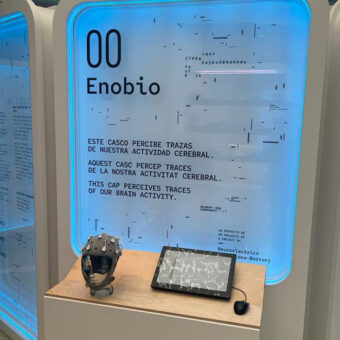In psychology, memory is defined as the process by the brain stores and remembers information from the past. Classical psychological models see memory as a sequential process, where information is first encoded into the brain, and only then can be used or stored. Whatever information has been encoded, it is now represented in the brain and can be saved over prolonged periods of time. Once stored, a retrieval mechanism allows that information to be accessed or recalled (see upper-right Figure, adapted from Dudai 2004). The timespan in which those operations occur allows psychologists to differentiate between short-term memory (seconds to a minute) and long-term memory (potentially unlimited). When short-term memories are manipulated and applied to cognitive tasks, memory is identified with the term working memory.

When it comes to the biological substrates of memory, these stages are not so well defined and much less understood. Overall, all aspects related to memory seem to be distributed processes, involving a large number of brain areas and several encoding mechanisms. For instance, hippocampus seems to be involved in the encoding of new information: when damaged, the ability to form or encode new memories is lost, although old memories are safe and can be recalled. This process seems to depend on the ability of the hippocampus to coordinate the activity of its neurons and produce oscillations in theta frequency (Buzsáki an Moser 2013). In parallel, frontal areas of our brain seem to be involved on the manipulation of memories that are already stored, as patients with damage in frontal lobe show deficits in recall (Simons and Spiers 2003). In frontal areas, memories seem to be encoded in asynchronous activity across large populations of neurons (Baeg et al 2003). How are these distant brain areas and different neuronal codes coordinated?
In top of that complexity, the content of what is encoded as a memory can be also modulated by the cognitive demands. Or your age. For instance, paying attention to a particular event increases the likelihood of its storage, while the presence of distractors, like an interesting conversation over lunch, or a sudden sound while you are learning a phone number, will reduce the likelihood of its storage (Cowan 1997). Attention, expectation, novelty, reward, or your age will influence on how well your memory works. Similarly, dementia, Alzheimer and other neurological diseases affect brain areas that are involved with several aspects of memory (see right side of the Figure). And, going back to the core question, how do all these areas communicate to give rise to the memory phenomena?

Emerging evidence from imaging, neurophysiology and computational modelling studies (Sauseng et al. 2005; Brincat and Miller 2015; Wimmer et al. 2014) indicate that precisely timed interactions between these (and several other) brain areas are crucial for memory function. But the particular mechanisms that support memory function through precise communication across brain areas are not sufficiently understood. Would that improve in few years?
References:
- Baeg, E. H., Kim, Y. B., Huh, K., Mook-Jung, I., Kim, H. T., & Jung, M. W. (2003). Dynamics of population code for working memory in the prefrontal cortex. Neuron, 40(1), 177–88
- Brincat, S.L. and Miller, E.K. (2015) Frequency-specific hippocampal-prefrontal interactions during associative learning. Nature Neuroscience.
- Buzsáki, György, and Edvard I. Moser. “Memory, navigation and theta rhythm in the hippocampal-entorhinal system.” Nature neuroscience 16.2 (2013): 130-138.
- Cowan, Nelson. Attention and memory. Oxford University Press, 1997.
- Dudai, Y. (2004). The neurobiology of consolidations, or, how stable is the engram? Annual Review of Psychology, 55, 51–86.
- Fell, J., & Axmacher, N. (2011). The role of phase synchronization in memory processes. Nature Reviews Neuroscience, 12(2), 105–18.
- Ranganath, C., & Ritchey, M. (2012). Two cortical systems for memory-guided behaviour. Nature Reviews Neuroscience, 13(10), 713–726.
- Sauseng, P., Klimesch, W., Schabus, M., & Doppelmayr, M. (2005). Fronto-parietal EEG coherence in theta and upper alpha reflect central executive functions of working memory. International Journal of Psychophysiology, 57(2), 97–103.
- Simons, J. S., & Spiers, H. J. (2003). Prefrontal and medial temporal lobe interactions in long-term memory. Nature Reviews. Neuroscience, 4(8), 637–48.
- Wimmer, K., Nykamp, D. Q., Constantinidis, C., & Compte, A. (2014). Bump attractor dynamics in prefrontal cortex explains behavioral precision in spatial working memory. Nature neuroscience, 17(3), 431-439.



